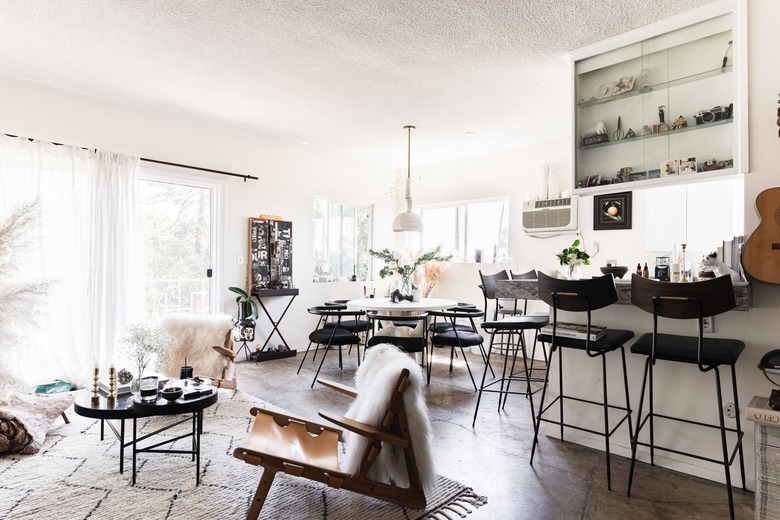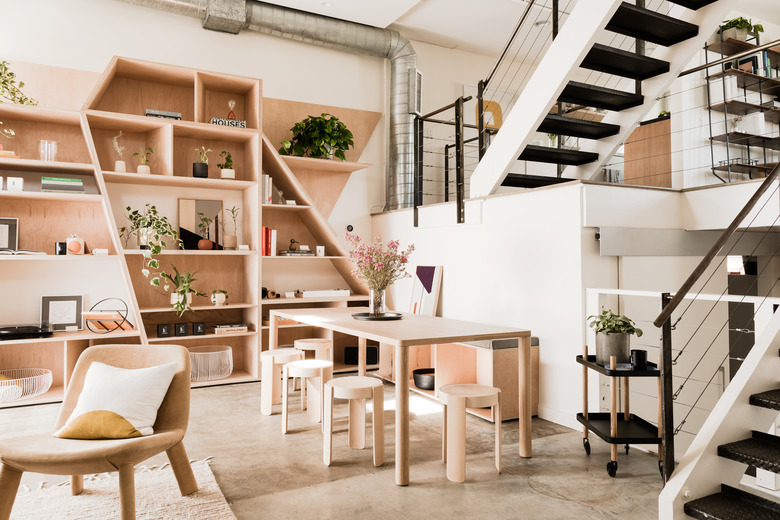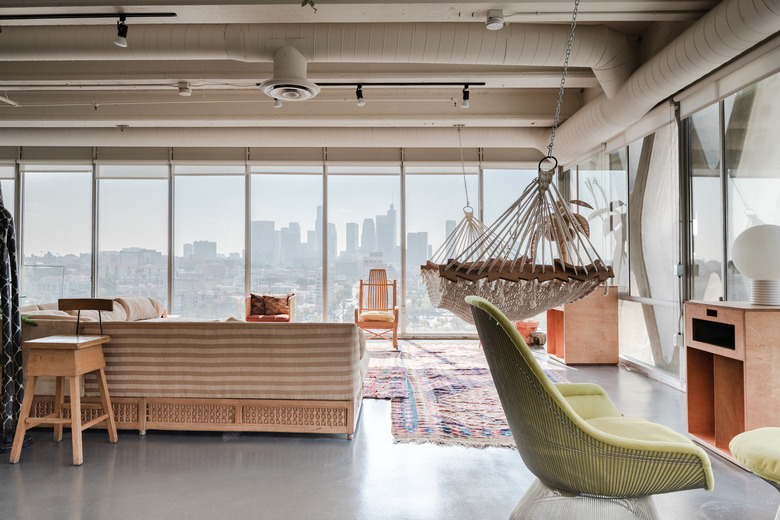Concrete Kitchen Floor: A Homeowner's Flooring Guide
Tile is one of the most popular kitchen flooring options because it is water-resistant, spill-resistant, durable and easy to clean, but concrete floors are quickly gaining popularity in modern kitchen designs for these same reasons — in addition to other benefits, such as slip-resistance. Plus, concrete flooring has a unique, sleek look that can fit in with numerous interior design styles.
Benefits of Concrete Flooring in Kitchens
Benefits of Concrete Flooring in Kitchens
Concrete flooring has many benefits that make it a great option for kitchen floors. Easily the biggest advantage of concrete is that it is durable enough for even the most high-traffic areas, meaning it can last up to a full century. Other advantages include:
- Design options: Decorative concrete can be stained,
pigmented, painted, textured, polished, aged, etched and more, making it an
incredibly versatile material that can be truly customized. - Cost effective: Because concrete flooring can be made from
an existing subfloor, it can be one of the most affordable choices for kitchen
floors. While the price can increase a bit depending on your chosen design
options, the fact that concrete floors can last as long as your home means they
can generally be considered to be affordable over time. - Eco-friendly: Concrete is made primarily from abundant, naturally
occurring materials. Between its
longevity and sustainability, concrete flooring is more eco-friendly than many other flooring materials. - Impervious to moisture: Once sealer has been applied,
concrete is almost entirely impervious to staining, water damage and mold. This
isn't just great for longevity and appearance but also means concrete is one of
the best kitchen flooring ideas for those with allergies. - Low maintenance: Sealed concrete can be kept clean with
routine sweeping and mopping, usually using only a clean pail of water, though cleaners
can be used as necessary. Old House Journal says cleaners should be pH neutral, or you may risk damaging
the floor. A quick sealing every three years will ensure the concrete maintains
its water and stain resistance.
Drawbacks of Concrete Floors in the Kitchen
Drawbacks of Concrete Floors in the Kitchen
There are far more advantages to concrete kitchen floors than there are drawbacks. That being said, there are still some disadvantages that may turn off some people from concrete floors:
- Hardness: Even when polished, concrete is still generally
more slip-resistant than many other popular materials used on kitchen floors,
particularly porcelain. That being said, the hardness of concrete flooring can
still be a problem when someone falls or drops something on it — a common
occurrence in the kitchen. Hard floors can also make it difficult to stand
for long periods of time. Area rugs or rubber mats set near the sink, stove and cabinets can help minimize these
risks. - Not DIY-friendly: If you're not using an existing concrete
slab for the finished flooring, installing and finishing a new slab is a big, messy job that is best left to professionals. This is typically done only when building a new home or a kitchen addition. It's possible for DIYers to stain an existing concrete slab for decorative coloring, but professional-quality results are difficult to achieve. Other finish work, like grinding and polishing, is best left to professionals. - Cold to the touch: Concrete flooring can be particularly cold without
radiant floor heating. - Chipping and cracking problems: While mostly impervious to damage, concrete can
chip if a heavy-enough object is dropped on it. When this happens, it will need
to be repaired and resealed. More commonly, concrete is prone to cracking, as it's the nature of the material. Most cracks are not structural and are considered cosmetic, but they are difficult or impossible to hide.
Hiring a Flooring Professional
Hiring a Flooring Professional
When it comes to finding a professional to install your concrete kitchen floor, first do the research regarding what you want done to your floor. Do you need someone to install a new concrete floor, or will you be working with your existing slab? Will your existing slab need repairs? Do you want etching, staining or color flakes? Should the floor have anti-slip additives? Do you have a preference in coatings and want epoxy, resin or something else?
Depending on what you need to have done, you may need someone who specializes in concrete pouring, concrete finishing, concrete cutting, concrete flatwork or floor coating. You may even need to hire multiple contractors to handle different parts of the project.
Concrete-pouring specialists can help you lay a new floor and may be able to apply basic stains and finishes. Concrete-finishing experts can also help with the pouring, but they are able to add decorations before the concrete dries and can usually apply finishes as well. Concrete cutting is its own specialty, but if you want saw etching, you will likely need to find a cutter who specializes in decorative designs. Concrete-flatwork specialists and floor-coating specialists apply decorative finishes ranging from anti-slip to high gloss, with the difference being that floor coaters tend to work with a variety of materials and concrete-flatwork specialists work only with concrete.
When calling experts, ask them if they offer all of the services you need. If not, ask if they can recommend anyone specific for the services they do not offer.
For the actual installation, expect the process to last between a few days and a few weeks depending on the scope of your project. Polished concrete floors with one color can cost between $2 and $6 per square foot, but the price can go up with other embellishments. For example, saw cuts can add $1 to $3 per square foot, and acid staining can add $2.25 to $3. With a lot of aesthetic embellishments like acid stains, color flakes and saw cuts, a newly laid concrete kitchen floor can end up costing more than $30 per square foot.
References
- All Garage Floors: Important Tips on How to Choose a Floor Coating Contractor
- Old House Journal: Touching Up Old Floors
- Home Flooring Pros: Concrete Kitchen Floors – Pros & Cons, Ideas, Costs, Installation & Cleaning
- HomeAdvisor: How Much Do Polished Concrete Floors Cost?
- ConcreteNetwork: Concrete Floor Cost – What You'll Pay for Polished or Stained Concrete


